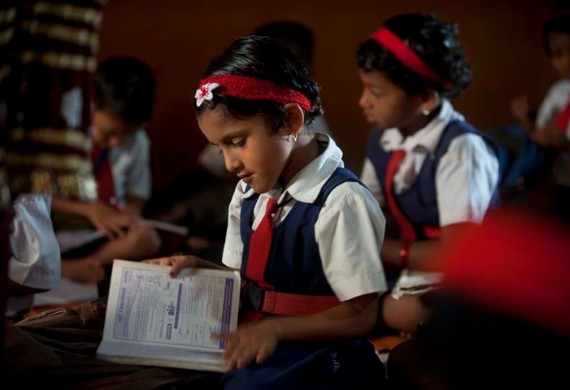
NFHS-5 Findings Shows Marginal Improvement in Rural Women's Education
By: WE STAFF | Saturday, 9 January 2021
Education and the right to education is one of the main fundamental rights of our country’s citizens. Over the many years, especially after independence, India has managed to increase its literacy rate. It also has more primary education than ever before. The present-day education system has come a long way and age-old traditions have undergone a drastic change. One of the biggest achievements of India was the increase in literacy rate to 74.04 percent in 2010-11 from 18.3 percent in 1950-51.
The country has been making great strides in educating children; at the time of Independence, India was largely illiterate (nine percent women and 27 percent men were literate). The goal of providing free and compulsory education to all children up to 14 has, however, been elusive. The number of people educated increased generously between 2005-06 and 2015-16. Among girls, the median years of schooling increased to 4.4 years in National Family Health Survey-4 (2015-16) from 1.9 years as of the NHFS-3, (2005-06). The median years of schooling among boys increased to 6.9 years in NHFS-4 from 4.9 years in NHFS-3. Over a similar period, the percentage of boys and girls with no schooling reduced to 31 percent from 42 percent in girls and 15 percent from 22 percent in boys.
The status of education in rural areas, especially for women, has not seen a very radical change. Reasons for the same may be attributed to social and cultural stigmas. Conventions and orthodox continue to smother rural landscape. Poor families tend to educate their sons; girls are married off soon. Most families are reluctant to send their daughters to study in schools or urban areas because they fear they would face sexual violence.
There was an overall improvement in the number of rural women who were educated. Gujarat showed maximum improvement in terms of girls or women having 10 or more mean years of schooling. The percentage increase in the area was six percent in Manipur and Meghalaya and seven percent in Kerala. According to NFHS-5 data, the percentage of men and women having 10 years or above mean years of schooling was maximum in rural areas of Kerala, Goa, Gujarat and Himachal Pradesh.
Of the women living in rural areas in the 17 surveyed states, Kerala had the maximum having 10 or above mean years of schooling while Tripura had the minimum. Goa and Gujarat had the highest percentage of rural men having 10 or above mean years of schooling. Only 69 percent girls and 85 percent of boys over the age of six had attended school as of NFHS-4 (2015-16). Nearly 33 percent females finished seven years of schooling or less; 13 percent finished 8-9 years of schooling.
Among boys, 35 percent finished seven years of schooling or less; 16 percent finished 8-9 years of schooling. Just 10 percent girls and 13 percent boys finished 10-11 years of schooling. Nearly 31 percent females and 15 percent boys never went to school. Nearly 14 percent girls and 20 percent boys finished at least 12 years of schooling.


.jpg)



